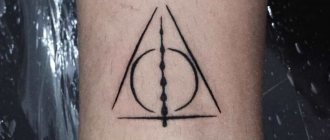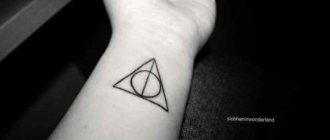How the Angel of Death takes the souls of people
This angel is usually seen only by dying people and sometimes a few days before their death. But on rare occasions it can also be seen by outsiders. Most often it is relatives of relatives, but it can also be doctors or nurses if the person is dying in hospital.
Despite the grim and frightening name, the Angel of Death usually brings with him only relief and peace, he does not want to deliberately frighten anyone, he is only a Guide.
Sometimes the Angel of Death is called Death himself, especially since his outward descriptions are often similar - dark clothing, skull-shaped face, but more often it is still believed that it is the Guide who comes for the dying, not she herself.

Dying person in hospice
One day, the Angel of Death was confronted by a woman named Joan Reisling, who was then working at a hospice, a shelter for the hopelessly ill and dying. Among all the hospice patients, Joan developed a special bond with the one man with whom she spent the most time:
"I spent a lot of time talking about spiritual things during those hours when his pain was released and he was getting a little better. He stayed with us for four months. That very morning I went into his room as usual to raise the blinds, he always asked for it and wanted to see the sunlight.
But as I approached the window, I suddenly noticed a frail female figure sitting on the patient's bed. And then I heard her voice: "Please leave the blinds closed. The voice was unexpectedly low for such a thin woman, and then I saw her face.
In the pale light of the room lamp, that face seemed almost normal on one side, except for the severely sunken eye socket and the bulging cheekbone, but the other side was so emaciated, literally skinned bone.
I froze in place with fear gripping me, and this "woman" put her hand on the patient's chest in the heart area and he opened his eyes. When he saw me, he smiled and said, "Good morning, Joan," but then he noticed the "woman" and his smile grew even wider.
The "woman" leaned over and kissed him, then took her hand off his chest. The patient looked at me again, and already with great difficulty uttered the words, "Isn't she beautiful...how can anyone be afraid of death?" Tears came to my eyes after that, and I really wanted to run up to him, but I couldn't do anything, it was like I was paralyzed. I could only stand and watch.
It was all so strange, I could see with my own eyes how his life was flowing into the "woman" through her fingertips. And then the heart monitor went out and beeped. I was able to move again and ran down the hallway for help, and when we returned a few seconds later, the "woman" was no longer in the room. My patient was lying dead."


Death doesn't steal your life
A similar story was told by eyewitness Donald Brousard of Pensacola, Florida. His wife of 30 years had battled cancer for several years, but lost that battle.
That night, he sat at home by her bedside in a dark room and held her skinny, emaciated and almost weightless palm in his hands. By then his wife was in such a state that she no longer recognized anyone and her mind had almost left her. Donald realized that it was already counting in days, if not hours.
"For the past week she no longer recognized me and was unresponsive to the people around her because of the strongest medication she was being given. And suddenly something happened, her gaze became meaningful and she was looking at something at the foot of her bed with interest. And I, still holding her hand, saw it, too!
At first it was just a huge dark blob that quickly took on the shape of a human figure. At that moment, the room became much colder and even harder to breathe, as if almost all the oxygen had been sucked out of the room. My wife turned to me and said in a strained whisper, "He's come for me, Donnie. I want to go... It's time you let me go."
I didn't want to let go of her hand and I cried, and she looked at me pleadingly. Then I finally made up my mind and kissed her and then moved away from the bed. Then that dark figure stood on the other side of the bed and my wife touched her arm.
As my wife was dying, this figure glowed with a bluish misty halo, and the weaker it became, the brighter the glow. My wife no longer seemed to feel any pain, her arms went limp, and her eyes were wide open and stared directly at the dark figure. And then the figure seemed to disperse into millions of tiny dots and they merged with the darkness in the corners of the room.
My wife was lying on the bed already dead and she looked happy, she was smiling. Now I knew that Death is not to be feared, that it is not a ruthless sadistic killer. People don't understand Death's role in human life; it doesn't steal your life, it relieves you of the weight of your worn-out fleshly body, your disposable shell."


The Ripped Heartbeat.
New Yorker Carl DePencio lives on the eighth floor of a house that stands so close to another house that it is only 2.5 meters from his neighbor's window across the street. One summer evening Carl was sitting in his room reading a book when he suddenly felt all the sounds around him stop and become unusually quiet.
Even the sound of birdsong and the crickets chirping in the evening were gone, and the traffic on the road nearby was silent. And then, in that deafening silence, Carl heard a low sound, like a distant heartbeat, after which a strong gust of wind blew through his window and dropped the lamp standing on it:
"I heard a sound like the flapping of large wings, and when I looked out the window, a strong smell of wet earth and dying rotting plants hit my nose. And on the window sill of the neighbor across the street, I was surprised to see a large, dark shadow peering inside his room.
The window opened and that shadow swam into his room and the sound of his heartbeat became so loud that it pounded as if in my head and made my head hurt. Then I saw a flash of blue light in my neighbor's room, and immediately the sound of my heartbeat stopped.
I suddenly felt very strange and depressed, as if all the oxygen had disappeared from the air, and then collapsed helplessly on the couch. Immediately a fresh wind rushed in through the window with a whistle, but immediately disappeared again and then all the sounds returned to their place.
When I finally got up and looked out the window again, I saw people walking around in my neighbor's room and the lights were on. I shouted to them if they were okay and they said their father had died. Then I ran to their apartment to help them with various things.
Later I often asked myself what it was and why I saw it, since I'm not even related to the man. Why was I involved in this?"
PHOTO RATING "ANGELS OF DEATH" (ANGEL OF DEATH). According to Oleg Loginov.
This post is also available in: English
In Judaism, it is believed that when an angel of death by name comes for a man, he holds a knife in his hand with three drops of poison on the end of it. At the sight of the terrible black angel, the man opens his mouth in horror, the drops fall there and the man dies from it. In criminology, "Angels of Death" are referred to as employees of medical institutions or caregivers who care for seriously ill people who massacre their patients.
John Adams
John Bodkin Adams after graduation, he moved to live in the English town of Eastbourne, where he began his medical practice as a general practitioner.
In his medical practice, Adams practiced euthanasia, helping sick old people pass away. But he did not help them unselfishly. Before they died, they bequeathed to him their money, property and jewelry. Later, an investigation revealed 163 cases of suspicious deaths of his patients. They were sent to the afterlife after John had treated them with large doses of morphine, heroin, or barbiturates. But all 163 left wills in favor of their doctor. This made Adams the richest doctor in Britain. This aroused suspicion, and John was brought to trial for the murder of two elderly widows, Gertrude Hallett and Edith Alice Morrell. And Hallett was not old, she was 50 years old at the time of her death. The press vehemently attacked Adams, calling him a "serial killer," but public opinion was unaffected by the court's decision. John Bodkin Adams was acquitted. And more than compensated for his legal expenses by suing several newspapers for undermining his business reputation.
So Adams remained at large and died of old age on July 4, 1983, at the age of 84.
Beverly Alitt
English nurse Beverly Alitt, who worked in the children's ward at Grantham and Kesteven Hospital, Lincolnshire, killed four young patients in 1991 by injecting them with insulin or potassium to induce a massive heart attack and simulate a natural death. After her arrest, she was examined by psychiatrists and found to have a mental disorder called Munchausen syndrome. This did not save her from being sentenced to 13 life sentences, only she is serving her sentence in a special facility for mentally ill criminals.
Richard Angelo
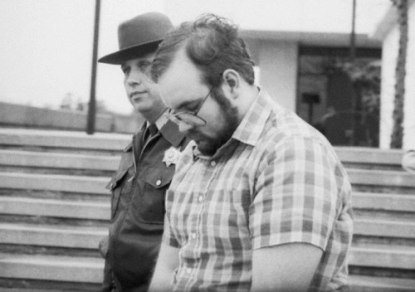

Richard Angelo was working as a nurse at Good Samaritan Hospital on Long Island and decided he was underappreciated. He began poisoning some of his patients with a paralyzing drug called Pavulon. Angelo's plan was to be there when a patient's heart stopped, so that he could save him in front of all his colleagues and be considered a hero. But he was by no means always able to be the savior. He is currently serving his sentence, ranging from 50 years to life in prison.
Amy Archer-Gilligan
Amy Archer-Gilligan has massacred at least five people with poison. One of them was her second husband, Michael Gilligan, and the others were patients at her private nursing home for the elderly and disabled. She may well have been involved in more crimes; authorities have identified as many as 48 deaths in her facility.
Joseph Dewey Akin
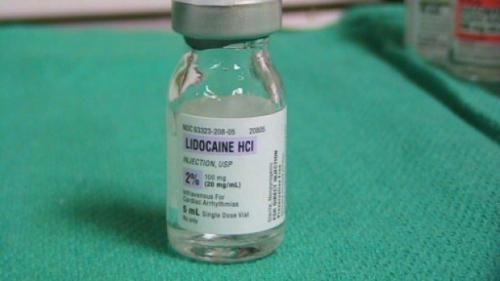

Joseph Dewey Akin worked at North Fulton Regional Hospital in Atlanta before moving to Alabama in 1990 and taking a job at Cooper Green Hospital. It was at this hospital that Robert J. Price died due to an overdose of lidocaine administered by Akin. Lidocaine is used to regulate the heart rate, and Akin claimed to have tried to resuscitate the patient.
Akin's colleagues noticed that when Akin was around, the number of emergencies increased. Police believe he was getting the thrill of excitement in a dangerous situation. Akin was convicted of one murder and sentenced to life in prison, but there are strong indications that he played a role in at least 16 other deaths.
Kermit Baron
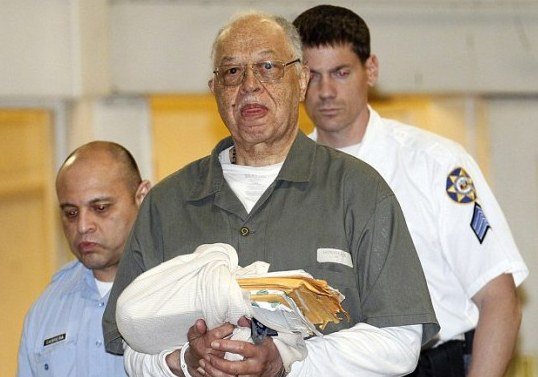

Philadelphia physician Kermit Gosnell Baron was charged with murder (including seven newborns), medical malpractice and illegal abortions. In May 2013, he was found guilty of three counts of murder and twenty other felonies. Gosnell was sentenced to life in prison without parole. After his conviction, he waived his right to appeal his sentence in exchange for the prosecutor's agreement not to seek the death penalty.
Elfriede Blauensteiner
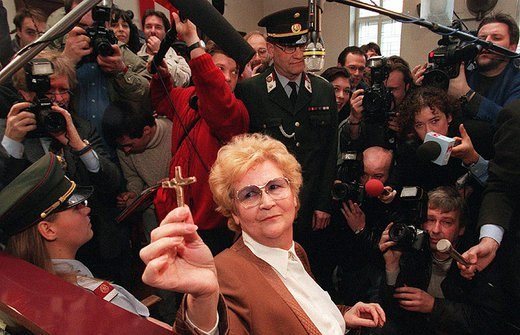

Elfriede Blauensteiner of Austria advertised her nursing services. But she would only take care of wealthy patients. And preferably single ones. She was able to gain the trust of the elderly patients, and they would include her in their wills in gratitude for her care, bequeathing their movable and immovable property to the nurse Blauensteiner. Elfrida would then apply her signature treatment to them, the main component of which was euglukon, which lowered blood sugar levels and, when combined with antidepressants, became a deadly remedy.
When the trail of deaths that had followed her became suspicious, an investigation into her medical activities began. In 1997, Elfriede Blauensteiner was found guilty of murder and fraud in Krems and sentenced to life imprisonment. At her trial she denied guilt while laughing a lot and waving a cross in front of journalists.
Blauensteiner died Nov. 16, 2003, of a brain tumor.
Abrau Jose Bueno
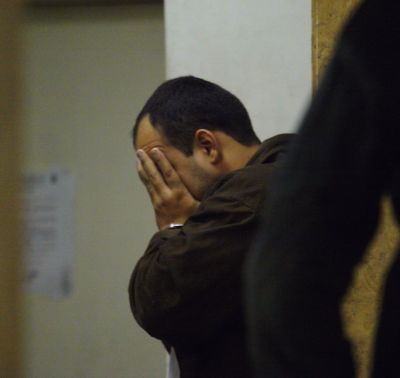

Abraão José Bueno was a Brazilian doctor and serial killer. In 2005 he was sentenced to 110 years in prison for the murder of four children and the attempted murder of four others.
Dorothea Waddingham
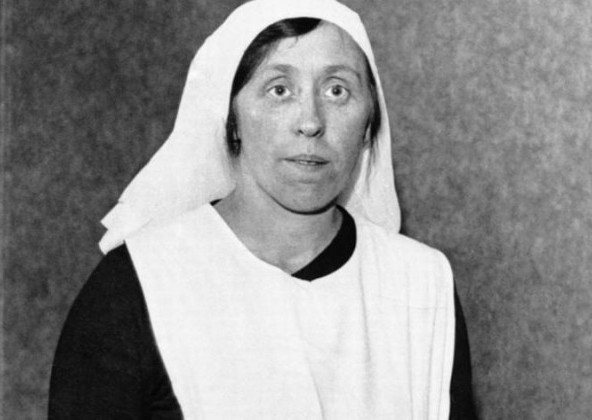

Dorothea Waddingham was a matron in an English nursing home in the 1930s, where she poisoned two patients, an elderly mother and her daughter with multiple sclerosis, to steal their inheritance. She was caught after an autopsy showing a fatal overdose of morphine, which she administered to the women. In 1936 she was convicted and hanged.
Elizabeth Wettlaufer
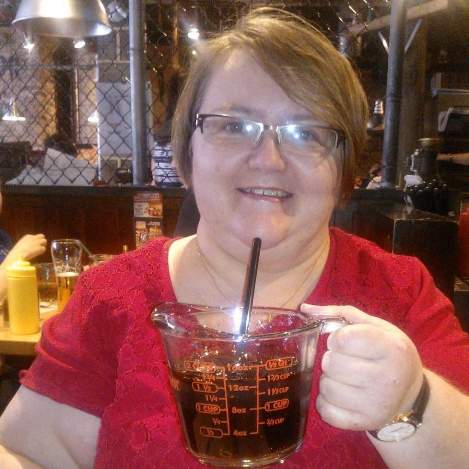

Elizabeth Tracy May Wettlaufer, a 49-year-old Canadian nurse, was arrested for killing at least eight elderly patients between 2007 and 2014 at two nursing homes. According to the investigation, Wettlaufer deliberately administered excessive doses of insulin, not because she was committed to euthanasia, but because she was irritable. Elizabeth was simply taking revenge on those who bothered her, and the victim might even be on the mend.
When she told her pastor about the murders, he prayed for her with his wife and told her not to kill anyone else. In 2016, Wetlaufer went to the Toronto Centre for Addiction and Mental Health, where she again confessed to the murders. This time they believed her and called the police.
Wettlaufer was sentenced to eight life sentences in 2021 for eight murders.
Kristen Gilbert
Kristen Gilbert was a nurse at the Veterans Affairs Medical Center in Northampton, Massachusetts - she killed four of her patients. The first victim was Henry Haddon, 35, an Air Force veteran who died of cardiac arrest caused by an injection of adrenaline, a drug used to regulate the heartbeat.
Gilbert killed her other victims in the same manner. During the investigation into the circumstances of these deaths, Gilbert served 15 months in prison for making a bomb with which she threatened to blow up the medical center. There is a curious version of her motives. Allegedly, she was injecting horse doses into patients to attract the attention of the hospital's police officer, James Perrault. He was instructed to be present during medical emergencies. In 2001 Gilbert was sentenced to life in prison without parole for 20 years.
Edson Guimarães
Edson Isidoro Guimarães is a Brazilian nurse born in 1957 convicted as a serial killer. He confessed to five murders and was convicted of four, but Guimaraes is suspected of sending a total of 131 people to the afterlife. He claimed that he was driven by pity - that Guimaraesch chose patients whose medical condition was irreversible and who suffered unbearable pain.
Gwendolyn Graham and Katie Wood


The most brutal Angels of Death can be recognized as the American lesbian nurses Gwendolyn Graham and Kathy Wood, who worked in a nursing home in Michigan. They preferred to act with their hands rather than with a syringe. To begin with, Gwendolyn and Cathy bandaged themselves with "blood" when, in January 1987, they strangled an old woman they were caring for with a towel and exchanged vows of love and fidelity over her body. They then murdered four other elderly women over the next few months. But after their arrest, all the "toughness" fell off the stranglers, and their vows "evaporated." They took turns "drowning" each other. Kathy Wood did better, getting off with 40 years in prison, while her lover, Gwendolyn Graham, was sentenced to five life sentences.
Amelia Dyer


Amelia Dyer was hanged in Newgate Prison on June 10, 1896, at 9 a.m. sharp. The criminal's last words were, "I have nothing to say. Indeed, what is there to say, with 400 children on her conscience.
Amelia Dyer could not boast of a happy childhood, from the age of 13 she began working in a corset shop, at the age of 24 she married a 59-year-old man. But closer to 30 I found myself in the medical profession. In "Victorian England" having illegitimate children was considered a disgrace. So women learned how to avoid shame through secret deliveries, which were delivered by midwife Dyer. And the children they gave her for her own maintenance, paying for their maintenance of 10 pounds a year. Amelia set up a kind of nursery on her farm. Only her children weren't naughty. They slept peacefully most of the time under the influence of Godfrey's Cordial, also known as Mother's Friend, a very popular drug that in large doses caused babies to become exhausted and die quickly. Artificial sleep inhibited all of the babies' vital processes. But when they died, it did not arouse much suspicion - the children were recognized as non-viable, and besides, they grew up without mother's milk.
Since the amount of money depended on the number of children, Amelia literally got mad and lost caution. She stopped using doctors to examine the deaths of babies, and began to dispose of the bodies herself. And, in the end, she got caught. It was estimated that in 10 years of illegal business she sent about four hundred babies to the other side of the world.
Vicki Don Carson Jackson


In 2006, a nurse was on trial in the United States for killing her patients. The woman, who worked at a Texas hospital, confessed that she had murdered 10 people.
According to the investigation, 40-year-old Vicky Dawn Carson Jackson had been injecting patients with a drug that temporarily stopped their breathing. She usually did this while the patient was hooked up to a ventilator.
Benjamin Jean.
From December 2003 to February 2004, an unusually large number of patients at Horton General Hospital in Great Britain suffered from shortness of breath. Suspicion fell on nurse Benjamin Jin after it was noted that all cases of respiratory arrests occurred while he was on duty, and he seemed to get the thrill of worrying about patients during resuscitation.
Gene was eventually found guilty of killing two patients and seriously injuring 15 others by administering excessive doses of muscle relaxants or non-prescription painkillers. Police found him in possession of a lethal dose of muscle relaxant. He was sentenced to 17 life terms for his crimes.
Jeanine Jones
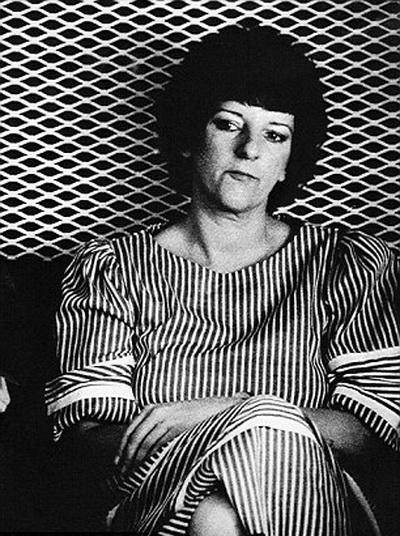

Jeanine Ann Jones from 1978 to 1982 often used muscle relaxants to quietly kill her victims, which she chose exclusively to be infants.
Jones worked as a pediatric nurse at Bear County Medical Center in San Antonio. By 1981, other nurses noticed that the infant mortality rate had become extremely high. And a nurse named Cheryl Pendergraf decided to do her own investigation. She took a list of children who had died suddenly from unexpected causes and compared it to the nurses' work schedules. She found that all of the deaths occurred while Jones was at work, and most of the dead were her patients.
In the end, prosecutors were able to charge Jones with only one murder, but she was suspected of killing 46 children. She was sentenced to 99 years for the murder and 60 years for another incident in which a child survived.
Robert Diaz


In 1981, Robert Diaz worked the night shift at three different Los Angeles hospitals. Diaz killed his victims by injecting them with huge doses of lidocaine. His victims were elderly ICU patients, in which case the drug could cause serious damage to their already compromised health and eventually lead to death.
The investigation began after police received an anonymous phone call from a woman who identified 19 patients who had died while Diaz was "caring for them." All had convulsions and dizziness before they died. When police searched Diaz's home, they found caches of lidocaine and other drugs. Diaz is suspected of being involved in 38 deaths, but he was charged with only 12 murders. Diaz was sentenced to death in 1984, but died of natural causes in 2010 at age 72.
Charles Cullen
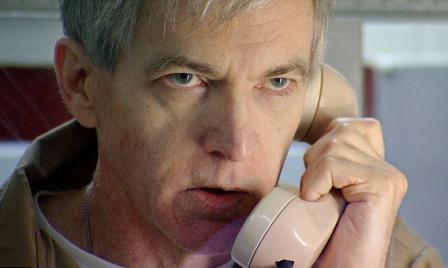

Charles Edmund Cullen did not have a particularly happy childhood. He was seven months old when his father died. And when he was 17, his mother died in a car accident. Devastated by his mother's death, Cullen dropped out of high school and enlisted in the U.S. Navy in April 1978. He served aboard the ballistic missile submarine Woodrow Wilson. In 1984, Charles received a medical exemption from the Navy and became a civilian nurse. His neighbors characterized him as a quiet, reserved man who was reluctant to make contact with them. In this case, the saying "there are devils in quiet places" was vividly confirmed.
Charles Cullen had a special relationship with death. He made about 20 suicide attempts, but he could not kill himself. And then he began to send his patients to the afterlife. Cullen injected patients with lethal doses of powerful drugs, particularly digoxin, a drug used to treat cardiac arrhythmia. According to him, he did it to alleviate the suffering of seriously ill people. True, this is questionable. For example, the first person he administered a fatal intravenous overdose of the drug was Judge John W. Engo, who was admitted to S-Barnabas Medical Center with only allergies.
On April 30, 2004, Charles Cullen pleaded guilty to 13 murders. As a result of a legal agreement, this confession saved him from the death penalty.
In all, Charles Cullen pleaded guilty to killing 22 people in New Jersey and attempting to kill three others. However, a deal is a deal - he was not executed. In March 2006, a court in the U.S. city of Somerville sentenced Cullen to 11 life sentences for 29 murders.
Sonia Caleffi.


Nurse Sonia Caleffi took a job at Lecco Hospital near Milan in August 2004. Soon the facility's chief physician noticed that Caleffi's department was experiencing a dramatic increase in mortality. It turned out that the nurse had decided there was no point in "blazing a white trail" for the elderly and terminally ill. She injected air into their veins, after which people died of respiratory disorders and embolism. The police were able to prove five murders. In her diary Sister Caleffi carefully recorded the details of her patients' deaths and confessed that she felt "powerful and important" in sending people to the afterlife.
Jacob Kevorkian
Jacob Kevorkian is a pathologist, artist, writer, and composer widely known as "Dr. Death." He became known as the most ardent public supporter of euthanasia, the so-called "patient's right to die by physician-assisted suicide. Kevorkian has helped 130 Americans pass away. "Dying is not a crime," he philosophized dashingly. In 1999, Kevorkian was arrested and convicted for his direct role in carrying out a number of voluntary euthanasia cases.


He was found guilty of second-degree murder and sentenced to 25 years in prison, but was paroled as early as June 1, 2007, and died four years later at age 83.
Steven Letter
Steven Letter worked at a hospital in the German town of Sontkhofen from 2003 to 2004. During that time he killed at least 28 of his patients. When police first questioned him, he confessed to killing 12 of them, but later said he could not remember the exact number of people he had killed. Most of his victims were over the age of 70, so their deaths were not suspicious for some time.
Letter claimed he killed his patients to end their suffering, but hospital staff and police said not all of the patients were in critical condition. After exhuming 42 bodies, Letter was found guilty of the premeditated murder of 12 patients, 15 manslaughter and one mercy killing.
Christine Malevre


For a time, the symbol of the struggle for the necessity of allowing euthanasia was the young nurse Christine Maleur of the prestigious French clinic "François Cinet" in the suburb of Paris Mant la Jolie. Mademoiselle Maleur first confessed to killing 30 patients and then attempted suicide the next day.
She later came to her senses and said that she had only helped three of them die, and at their request. On January 30, 2003, Malevre was found guilty of killing six patients and sentenced to ten years in prison. She appealed for a reduced sentence, and as a result, her sentence was increased to 12 years of captivity.
Orville Majors.


From 1993-1995, Clinton nurse Orville Lynn Majors is believed to have killed about 130 of his patients. Only six have been officially proven. The nurse used potassium chloride injections as the murder weapon. He killed patients who were, in his opinion, overly demanding, whiny, as well as those who were added over and above his workload. Witnesses testified that he hated the elderly, called them "waste," said they "should be gassed." In October 1999, Major was sentenced to 360 years in prison.
Stephen Massof.
Stephen Massof, who worked at Kermit Gosnell's abortion clinic, killed more than 100 babies after seeing them show signs of life. He was sentenced to 6 to 12 years in prison.
Leinz nurses.


Four nurses from Vienna's Linz Municipal Hospital: 28-year-old Maria Gruber, 29-year-old Irene Laidorf, 32-year-old Waltraud Wagner and 50-year-old Stephanie Meyer were called "Angels of Death" by some and "Witches of Linz" by others.
They began killing in 1983, but because all of their patients were over 75 years old, the murders went unnoticed for a long time. When they were finally caught in 1991, they confessed to killing 48 people. The police believe there may have been many more victims, about two hundred.
In April 1991, their trial ended. The court found that they had committed 21 murders, 15 of which were attributed to Waltraud Wagner. The nurses gave various accounts of their motives for their crimes. Some said they did it out of compassion, to ease the transition to the other world; others confessed that they were annoyed by the cries of the sick and the pleas for help. So they put them to sleep for eternity with sleeping pills or drank them to death with water poured into their airways.
Waltraud Wagner and Irene Laidorf were sentenced to life imprisonment, Maria Gruber to 15 years, and Stephanie Meyer to 20 years in prison. Although the women confessed to many murders, they were released early from prison after some time for good behavior. Wagner was released in 2008 after serving more time than the others. Not only were these women released, causing outrage in Austria, but they were also given new identity cards so they could start a new life.
Arnfinn Nesset.
Nurse Arnfinn Nesset was accused of giving 22 lethal injections to homebound patients he cared for in Norway in the 1980s. Nesset forced his elderly patients to sign documents to take their money and then poisoned them with suxamethonium chloride. Arfinn Nesset may have killed as many as 138 people. In 1983 he was convicted of poisoning 22 patients and sentenced to 21 years in prison. He served only 12 years and then was under the supervision of authorities for 10 years, and is now believed to be living under an assumed name.
Marianne Nolle
Marianne Nölle (born 1938) is a German serial killer from Cologne. Nolle committed her crimes when she was a nurse. Between 1984 and 1992, she killed patients with truxal. She was sentenced to life imprisonment in 1993 for seven murders.
Aino Nykopp-Koski
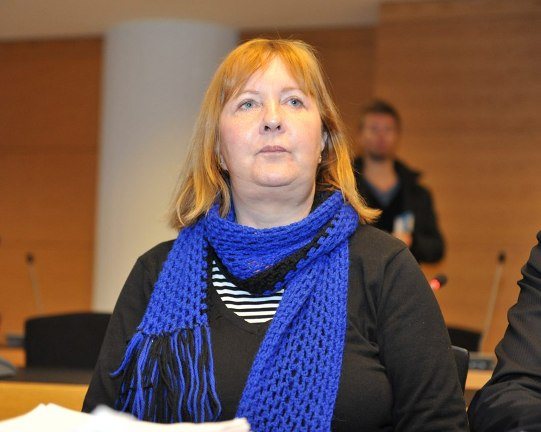

Aino Kerttu Annikki Nykopp-Koski is a Finnish serial killer patronage nurse accused of the largest murder series in Finnish history. She, as a patron nurse at Helsinki's Mariinsky Hospital from 2004-2009, killed elderly patients, with the help of medication. She was proven to have committed five murders and five other attempted murders. Nykopp-Koski was convicted on December 22, 2010 for "life" (12 years for Finland). At the same time she insisted on her innocence.
Efren Saldivar
In the late 1990s, Saldivar worked the night shift in the respiratory department at Greendale Medical Center. He usually killed his patients, mostly the elderly, by injecting them with muscle relaxants and was convicted of killing six people and attempting to kill another. But he himself had once mentioned that he was responsible for the deaths of about 200 people. Saldivar pleaded guilty to avoid the death penalty and ended up receiving seven life sentences.
Joseph Swango.
Joseph Michael Swango was a brilliant student at the institute. It is true that educators were surprised that he preferred to work as an ambulance attendant rather than pore over his research. And the fact was that Joseph liked the sight of dying people. During his career, Swango changed several medical institutions, managed to serve time in prison for fighting, but returned to health care by falsifying documents. Everywhere he worked, his patients passed away under seemingly innocuous circumstances.
In 1984, it was noticed that the patients' condition worsened after they tasted their attending physician Swango's own food. A mixture of sugar and arsenic was found in his office.
Joseph was then sentenced to 5 years in prison, but was released when he served half of his sentence.
In 1998, he was sentenced to 3.5 years in prison for fraud. Authorities used this time to accumulate new evidence against Swango. According to the FBI, Joseph was involved in the deaths of 60 people. However, the prosecution was only able to prove four fatal episodes. In 2000, Joseph Swango pleaded guilty in exchange for life in prison without parole.
Virginia Soares de Souza


Virginia Soares de Souza, the 56-year-old head of the intensive care unit at Curibo Hospital in Brazil, was accused of allegedly convincing her staff that to make room in the hospital for patients who could be cured, hopeless patients had to be sent to the grave. Together with her subordinates - three other doctors, three nurses and a physical therapist - they were suspected of sending 317 ICU patients to the other side over a seven-year period. First, they gave them a relaxing injection, and then connected the patient to a ventilator and gradually reduced the oxygen supply. As a result, the person would first lose consciousness and then die of suffocation.
In 2021, Virginia doctor Soares de Souza and seven others were acquitted by Curitiba's 2nd Court of Jury on charges of the deaths of patients who were hospitalized in the intensive care unit of Evangelical Hospital. But in 2021, de Souza was indicted on new charges.
Jane Toppan.


The Guinness Book of World Records named Jane Toppan the record holder among poisoners. And by this, it is as if her lifetime wish had been posthumously granted, who explained her motives for her actions as follows: "To kill as many people as possible - more helpless people than any other man or woman who ever lived..." Toppan has been proven 11 murders, she herself has confessed to 31, and forensic scientists believe she has about a hundred deaths on her conscience.
Read more in the article "Jane Toppan.
Timea Faludi
Timea Faludi is a Hungarian serial killer of seriously ill and elderly patients. She was nicknamed the "Black Angel. All of the crimes she committed, she did by administering lethal doses of drugs (sedatives and painkillers).
The court found that she arbitrarily gave intravenous injections to seven seriously ill patients between May 2000 and February 2001, and found that all seven patients died shortly thereafter. But the court found her directly responsible for only three of the deaths, stating that it "could not establish a direct and verifiable link between the injections given and the deaths" in the other cases.
On Dec. 2, 2002, a Hungarian court sentenced the 25-year-old Faludi nurse to nine years in prison
Anna Maria Hahn
Anna Maria Hahn (before her marriage, Anna Maria Fischer), nicknamed "Arsenic Anna," was the first woman to be sentenced to death in the electric chair in the United States. It is believed that Anna Maria Hahn became addicted to gambling in America, which eventually led her down the criminal path. She began gradually killing the elderly men of the German community in the city of Cincinnati by "grooming" them.
At first she cared for the old men so well that they gave her their money and homes, and then she poisoned them with arsenic. This is how she sent five of her wards from 1932 to 1937 to the other world. But for these crimes she herself went to the next world on December 7, 1938, after a brief stint in the electric chair.
Donald Harvey


Donald Harvey began his medical career at the age of 18 as an orderly at a hospital in London, Kentucky, USA. He later admitted that he killed at least a dozen patients during the 10 months he worked there. But he was not apprehended until two decades later. He is credited with between 36 and 57 murders, but he himself claims to have "helped" 87 patients cross over into the world of the dead during his twenty years of medical service. Harvey used arsenic, cyanide, and even insulin as murder weapons, from which his victims died a long and painful death. He did not limit himself in his actions and often resorted to violence. The orderly strangled patients and in some cases even pierced their internal organs with the sharpened end of clothes hangers. Harvey came under suspicion of poisoning one of the patients in the mid-1980s. The cops took a search warrant to his house, and they got it right. They found jars of cyanide and arsenic, books on the occult and poisons, and medical reference books there. But most importantly, the police found Harvey's diary, in which he described his murders in detail. The maniac nicknamed "Medbrat," as the cops nicknamed him, was immediately arrested.
Harvey was sentenced to four life sentences, to be served in Toledo, Ohio. On March 29, 2021, an unknown inmate attacked Harvey in his prison cell. The guards found him unconscious, and the next day Donald passed away.
Niels Hegel
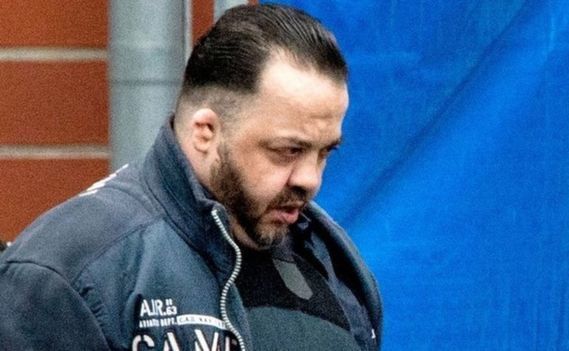

Nils Hegel, a nurse in Germany, has confessed to killing more than a hundred people during his time working in clinics. He killed 36 patients in the city of Oldenburg and 64 in nearby Delmenhorst. All of the murders were committed between 1999 and 2005.
His motive, prosecutors say, was to impress his colleagues by bringing back to life those patients he himself had driven to their deaths by injecting drugs that caused cardiac arrest.
In 2005, Hegel was arrested after injecting a patient at Delmenhorst Hospital with a drug that was not prescribed. Only three years later, Hegel was sentenced to seven years in prison for attempted murder.
In 2014-15, a second trial found Hegel guilty of two murders and two attempted murders. He received a life sentence.
After the exhumation of 130 bodies, the third one began, at which Hegel confessed to 100 murders.
Harold Shipman
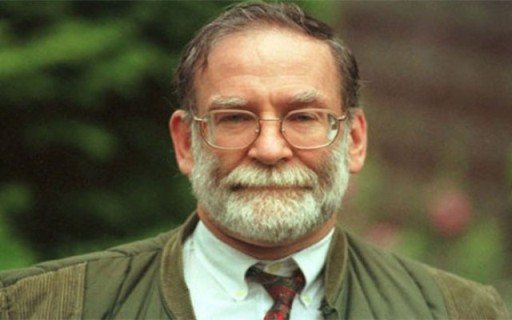

The record-breaker among serial killers is the British Harold Shipman, nicknamed "Dr. Death. He killed at least 352 people. Shipman was a private doctor in the Manchester suburb of Hyde and sent his patients to the afterlife. He acted simply and effectively: under the pretext that it is necessary to take blood for analysis or to enter the anesthetic, he injected the victim a lethal dose of morphine, and then quietly watched the reaction of the patient. The unsuspecting patients would thank the doctor with a smile, and five or six minutes later they would die. One of the motives for Shipman's crimes was self-interest: he forged wills of people he killed.
In January 2000, "Doctor Death" was sentenced to 15 life sentences.
Read more in the article "Harold Shipman.
*Based on texts from Wikipedia and other Internet resources.
